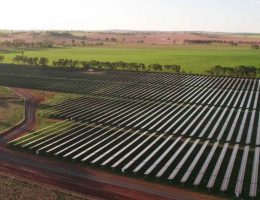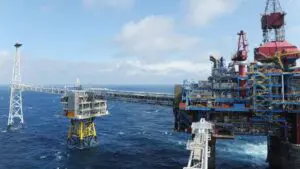New analysis of Australia’s emissions suggests that recent dips due to Covid-19 are unlikely to last and that Australia will miss its Paris targets by a large margin.
The rise in emissions likely to occur as Australia’s economy returns to a pre-pandemic state over 2021 will occur just before the 2021 Conference of Parties meeting, in which climate will become a key global focus.
The report, by environmental consultancy NDEVR, pre-empts the release of Australia’s next official government emissions data, covering the period from July to September 2020 (Q1, FY2021).
“Emissions for Q1/FY2021 are projected to be 124.2 Mt CO2-e, a 1.5 Mt CO2-e increase on last quarter”, said NDEVR. “This represents a reduction of 9.1 Mt CO2-e on the corresponding quarter the year prior (Q1/FY2020)”.
The group draw a straight line trajectory towards the Paris climate agreement beginning in 2015, and find that Australia has been above that trajectory since 2016 and that Covid-19 has resulted in a dip below it. “Q4/FY2020 reached 4.04 Mt CO2-e below budget largely due to the Covid-19 pandemic response”:
 Part of the reason for emissions trending downwards prior to Covid-19 are the falling emissions in the electricity sector due to the growth of renewable energy and the decline of coal. “Electricity emission projections for Q1/FY2021 were the lowest on record across the entire data set, dating back to 2001 (39.5 Mt CO2-e)”. Demand was little affected by Covid-19, even in states with high levels of lockdown.
Part of the reason for emissions trending downwards prior to Covid-19 are the falling emissions in the electricity sector due to the growth of renewable energy and the decline of coal. “Electricity emission projections for Q1/FY2021 were the lowest on record across the entire data set, dating back to 2001 (39.5 Mt CO2-e)”. Demand was little affected by Covid-19, even in states with high levels of lockdown.
NDEVR pin this change entirely on the growth of renewables.
“Renewable energy generation across the NEM states for the period was 26.4 per cent (including rooftop solar), the highest penetration rate on record for renewable energy,” NDEVR said.
However, drops in demand from Australia’s electricity sector have been partially offset by increases in the “stationary energy” sector, which includes the rising impacts of Australia’s rapidly expanding gas extraction industry; which has continued apace despite reductions in demand due to Covid-19.
In fact, in a review of emissions reductions efforts since 2015, NDEVR state that “Looking at the net changes in emission sources from December 2015 to December 2019 (pre-COVID levels), increases in stationary energy, transport, fugitive, industrial and waste emissions have all but nullified the progress made in the electricity, agriculture and LULUCF sectors. The former group of sources collectively increased by 6.8 Mt CO2-e while the latter decreased by 6.9 Mt CO2-e”.
The report serves as a stark reminder of the importance of climate action as a multi-sectoral effort, to ensure that the net result is emissions that are falling due to long-term, structural factors.
With the current ‘tug of war‘ situation resulting in, essentially, stagnation within Australia’s high-emissions industries, NDEVR says that “If emissions follow the historical trend…..the upper Paris target would not be met until 2039, with the lower target being achieved in 2042”. In fact, just under half of Australia’s total carbon budget to 2050 has been spent already in the years between 2013 and 2020 – 40.4 per cent.









